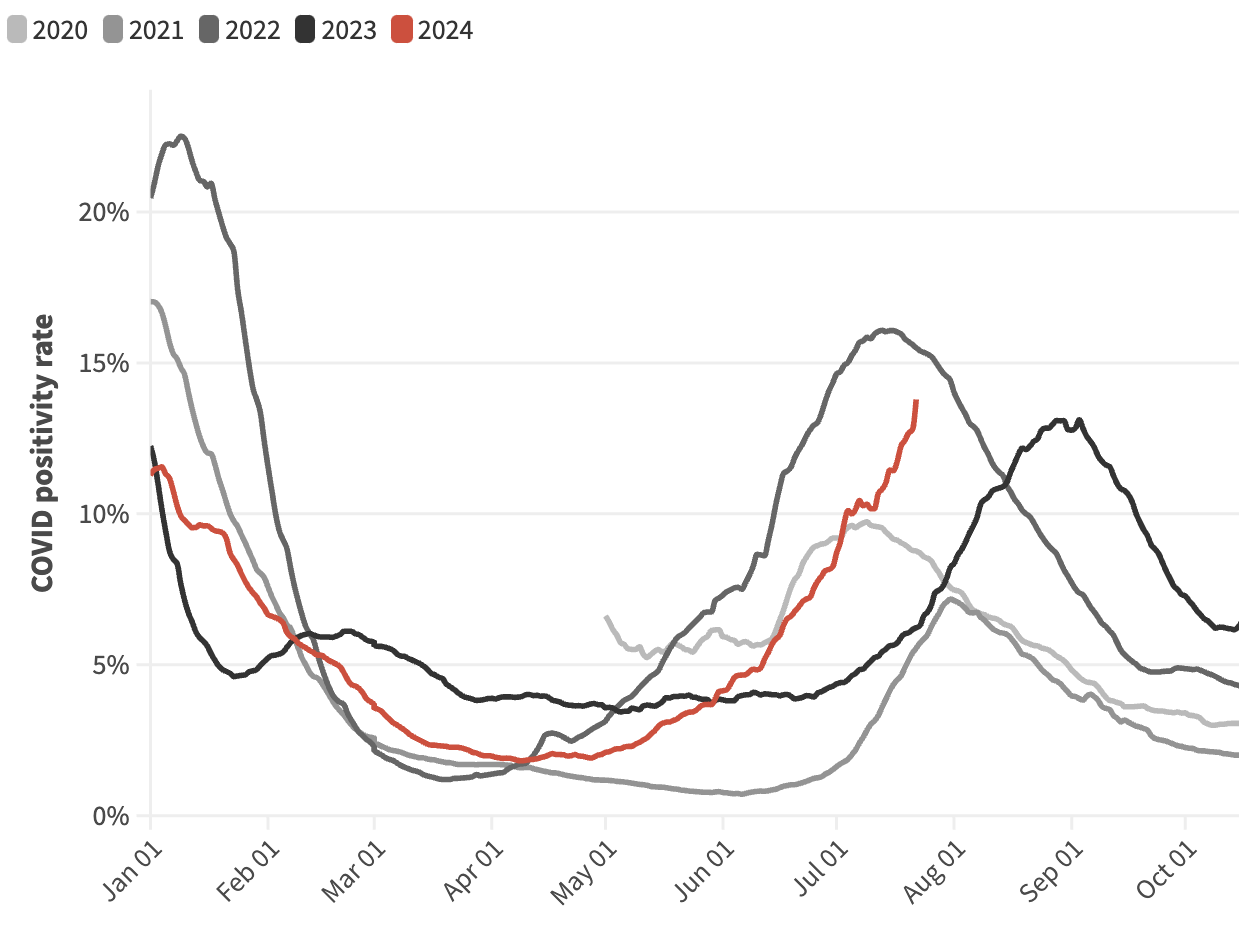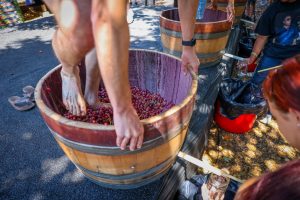California’s COVID positivity has continued to leap forward with each weekly update from the state’s health department. Now, the state has reached the second highest positivity rate of any summer surge, approaching a record high for this time of year.
Testing data through July 22 showed the percent of COVID tests coming back positive reached 13.8%, up more than two percentage points from the week before.
Two years ago, COVID’s seasonality — or lack thereof — was starting to become clear, and California had a nasty summer COVID surge. Headlines at the time warned of rising COVID reinfections, surging cases, hospitalizations and deaths. At the height of that surge, positivity rates reached 16%. Now, the seven-day average positivity rate is rapidly approaching that high, and showing no signs of slowing yet.
Thankfully a lot has changed in the last two years, and the virus is much less deadly than it once was, even if it is not less prevalent.
The state no longer tracks many of the metrics we first used to measure COVID surges and lulls. Case counts are gone, COVID hospitalizations are no longer tracked by the state health department, and while COVID deaths are still recorded on death certificates, it takes weeks for that data to be reported.
Wastewater and positivity rates are now the best ways to track the rise and fall of the virus’s prevalence in the community, and both show that the Bay Area and California have been in the midst of a large surge since early June.
Related Articles
How a Bay Area Asian American drag troupe survived the pandemic with high kicks and calculated pivots
Long COVID risk has decreased but remains significant, study finds
An unwelcome attendee has joined the Paris Olympic Games: COVID-19
‘Where have all the preschoolers gone?’ new UC Berkeley study asks
Biden tests positive for covid, has ‘mild symptoms’
Without many of the same metrics, it is hard to compare the current situation with previous summer surges. But for Dr. Errol Ozdalga, the difference is obvious in his day-to-day work at Stanford Hospital.
Ozdalga has seen an increase in patients with the virus in recent weeks. “There’s been a lot more patients with COVID,” he said, but “it continues to be that same theme — patients are admitted with COVID, not for COVID.”
And while the virus certainly causes complications, especially for those with co-morbidities, and plenty of deaths still, Ozdalga thinks “the biggest risk” for many of those coming in with COVID is the mandatory isolation and added precautionary measures, rather than the virus itself.
“Luckily, it’s not a dangerous life-threatening type of virus like it was before, in the first couple of years,” Ozdalga said, though he acknowledges that an influx of patients with any kind of respiratory virus in the summer time is a new phenomenon in the age of COVID. “In that sense, it’s unique.”












